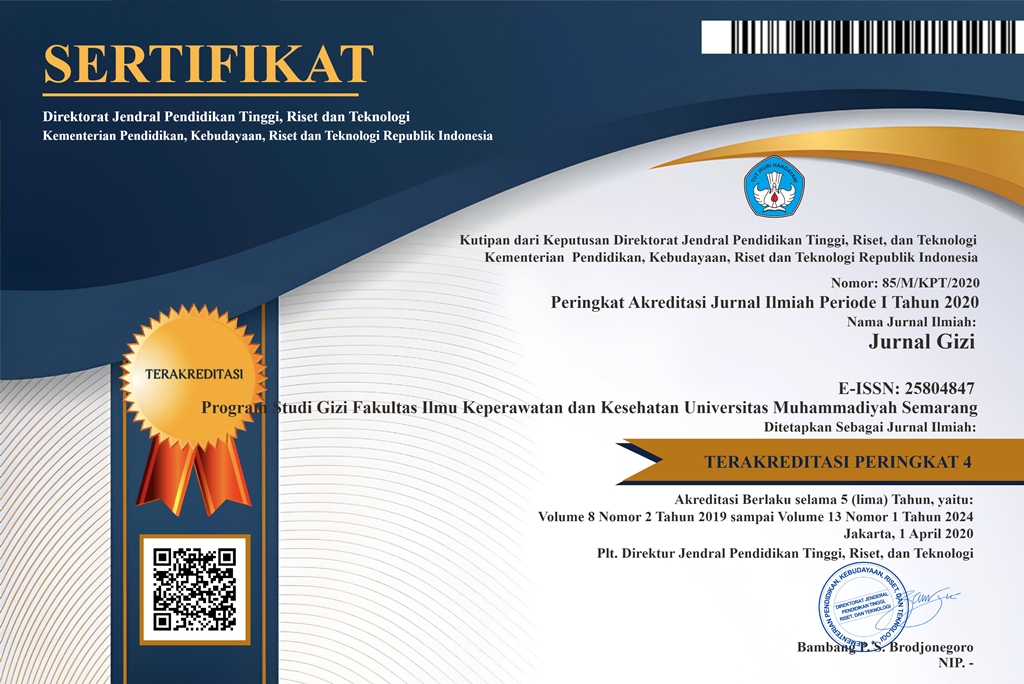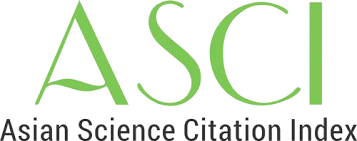Karakteristik Organoleptik dan Kadar Serat pada Brownies Kering Tepung Pisang Kepok dan Tepung Beras Hitam
(1) Program Studi D-IV Gizi Klinik Jurusan Kesehatan Politeknik Negeri Jember
(2) Program Studi D-IV Gizi Klinik Jurusan Kesehatan Politeknik Negeri Jember
(*) Corresponding Author
Abstract
One kind of the nutritional problems faced in Indonesia is low dietary fiber intake, which affects approximately 93.5% of the population. Dietary fiber refers to plant-derived components that resist digestion and absorption in the human small intestine. Low fiber consumption is associated with an increased risk of degenerative diseases such as diabetes, obesity, and cardiovascular disorders. Therefore, the development of fiber-rich food products, such as dry brownies made from kepok banana flour and black rice flour, serves as a potential solution to improve public fiber intake.The kind of the research conducted in this study was an experimental laboratory research using a Completely Randomized Design (CRD) with six treatments and four replications. The treatments consisted of varying ratios of kepok banana flour to black rice flour: 90:10, 75:25, 60:40, 45:55, 30:70, and 15:85. Organoleptic tests were performed by 30 semi-trained panelists to evaluate color, taste, aroma, and texture. The dietary fiber content was measured using the enzymatic method.The result of this study showed that fiber content varied significantly among the treatments (p < 0.05). The highest fiber content was found in treatment P5 (6.40 g/100 g), while the lowest was in P1 (5.32 g/100 g). Treatment P5 also received the highest preference in the organoleptic test, characterized by a dark brown color, moderately sweet taste, a strong characteristic aroma of kepok banana, and a slightly crunchy texture. Based on BPOM regulations, P5 qualifies for a “high fiber” claim, making it a promising functional snack alternative.
Full Text:
PDFArticle Metrics
Abstract view : 27 timesPDF - 14 times
DOI: https://doi.org/10.26714/jg.14.2.2025.100-113
Refbacks
- There are currently no refbacks.

This work is licensed under a Creative Commons Attribution 4.0 International License.
Diterbitkan oleh: Program Studi Gizi (D3 dan S1)
Fakultas Ilmu Keperawatan dan Kesehatan
Universitas Muhammadiyah Semarang
Sekretariat: Jl. Kedungmundu Raya No. 18 Semarang
Contact Person : Hapsari Sulistya Kusuma, S.Gz, M.Si (+62 85 6 41 536 553)

This work is licensed under a Creative Commons Attribution 4.0 International License.










.png)
.png)
_.png)